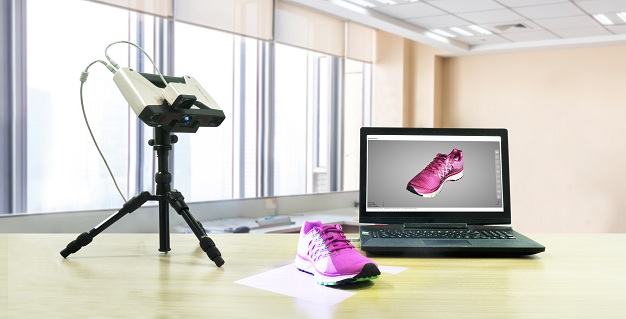The Importance of 3D Scanning in 3D Modeling

With 3D printers becoming increasingly popular in the past couple of years, 3D scanners have also seen a significant increase in popularity, as they allow you to scan a digital image that you can manipulate and 3D print with ease. 3D scanners are pushing 3D printing technology into the mainstream since you can scan just about anything with them and turn it into a print. This makes 3D printing more useful in everyday life situations and is one of the main reasons why 3D technology is spreading at such a quick pace.
Nowadays, you’ll come across portable 3D scanner models, which can print high-resolution images. These models can scan plants and animals, high-texture surfaces, humans, and pretty much any other object. A portable 3D scanner can scan objects of any shape and size, which makes it extremely versatile piece of equipment that can be utilised in a wide range of industries.
3D scanners use two methods to collect data for models – laser scanning and digitising. Laser scanning utilises a laser line, which is passed over the surface of an object in order to get 3D information. The surface data is scanned using a camera sensor mounted in the scanner that records accurate dense 3D points in space, allowing you to get information about the object without touching it.
Digitising, on the other hand, is a contact-based way of collecting 3D data. This is typically performed by touching a probe to numerous points on the object’s surface. This allows the user to gather individual 3D data points of the object instead of large swathes of points. Even though digitising may sound like the inferior 3D scanning method, that’s not completely true. Digitising is much more accurate than laser scanning, and is ideal for industrial reverse-engineering applications.
As a general rule, laser scanning is better for scanning organic shapes, while digitising is better for geometric shapes. Moreover, laser scanning is ideal for high-volume work (scanning planes, buildings, cars, etc), and for objects that you want scanned but can’t or shouldn’t touch (important and valuable artifacts, etc). Digitising, on the other hand, is ideal for first article inspections and engineering projects which require very precise measurements. However, you can use laser scanning for scanning geometric features and digitising for scanning organic shapes successfully, but you generally won’t have as much success as you would if you were to follow their intended purpose.



